Posts Tagged: Tithonia
Those Iconic Monarchs: Treats on Halloween and Every Other Day
It's Halloween and scores of trick-or-treaters are donning monarch butterfly costumes. But they can't do justice to the living monarchs, those...
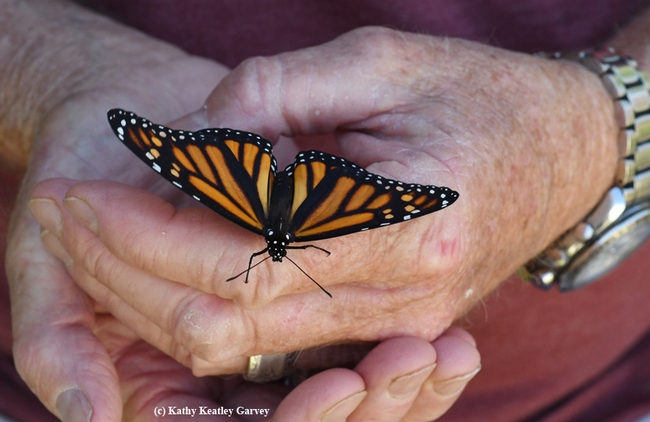
A newly eclosed monarch, ready to take flight. This image was taken on Sept. 24, 2018 in Vacaville, Calif. (Photo by Kathy Keatley Garvey)
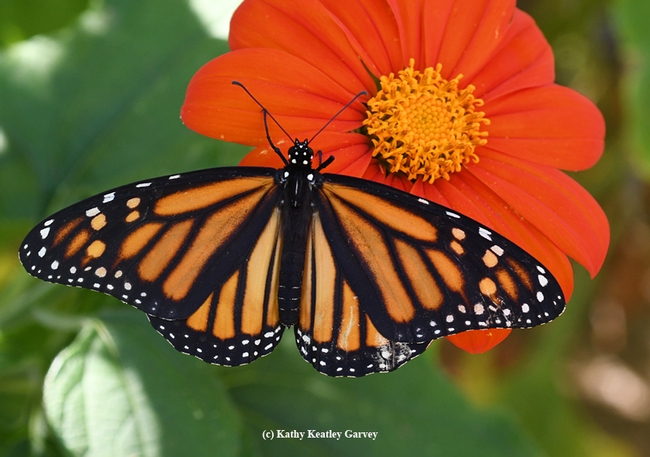
Spreading her wings on a Mexican sunflower (Tithonia), the newly released Monarch is about to take flight. (Photo by Kathy Keatley Garvey)
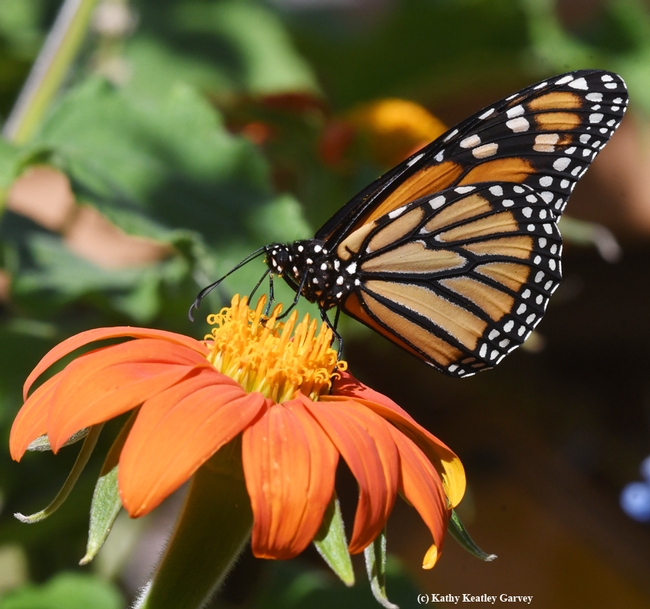
A monarch sips nectar from a Mexican sunflower (Tithonia). (Photo by Kathy Keatley Garvey)
A Case of Mistaken Identity
They can't drain your bank account. They can't open up new credit cards. They can't get medical treatment on your health insurance. But they are...
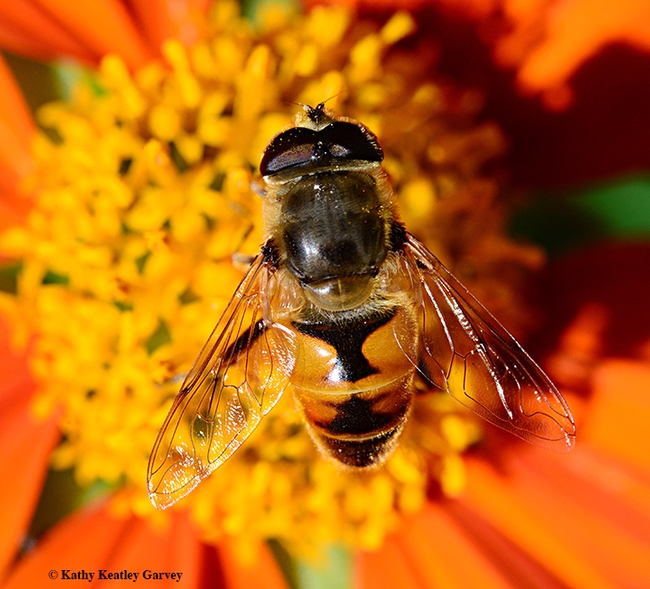
Meet the drone fly (Eristalis tenax), often mistaken for a honey bee. Note the one set of wings, large eyes, stubby antennae and a distinguishing "H" on its abdomen. (Photo by Kathy Keatley Garvey)
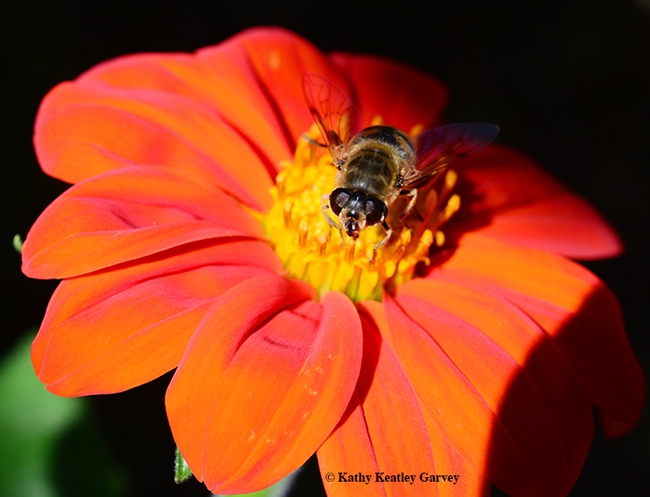
Drone fly nectaring on Mexican sunflower, Tithonia. (Photo by Kathy Keatley Garvey)
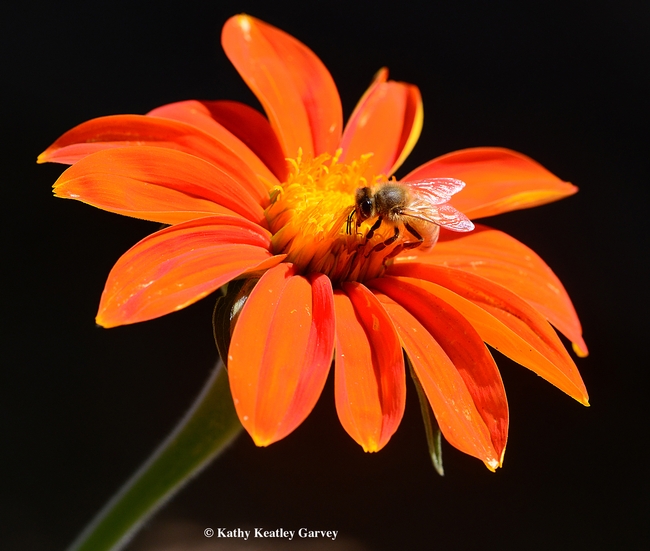
A honey bee sipping nectar from a Mexican sunflower (Tithonia). (Photo by kathy Keatley Garvey)
What's Not to Love About 'Boys' Night Out'?
We look forward to "The Boys' Night Out." Ah, pillow fights, popcorn, and marathon movies on TV, you ask? No. "Boys' Night Out" is when the...
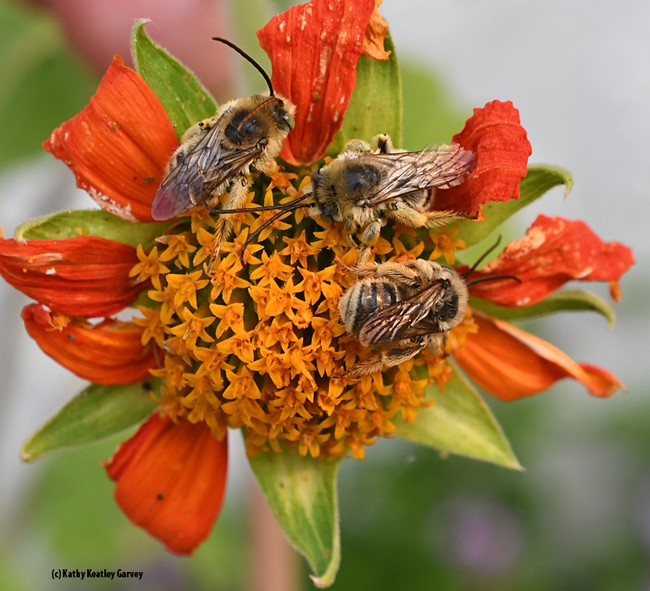
Longhorned bees--Melissodes (possibly M. robustior) slumbering on a Mexican sunflower. (Photo by Kathy Keatley Garvey)
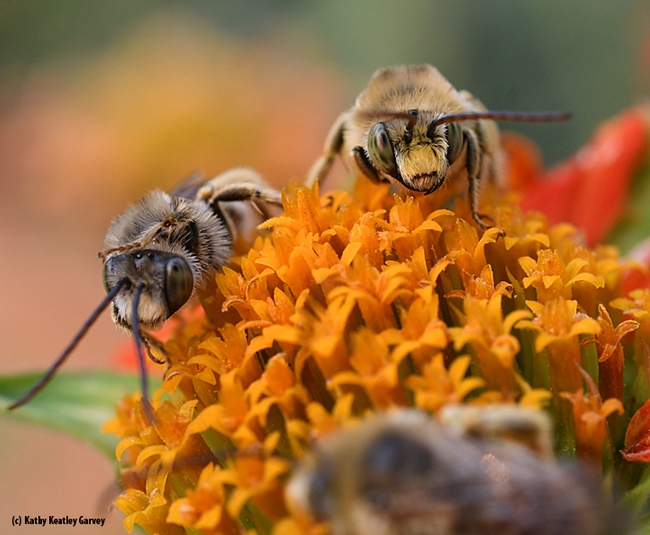
Is it time to wake up? Two male longhorned bees eye the photographer. (Photo by Kathy Keatley Garvey)
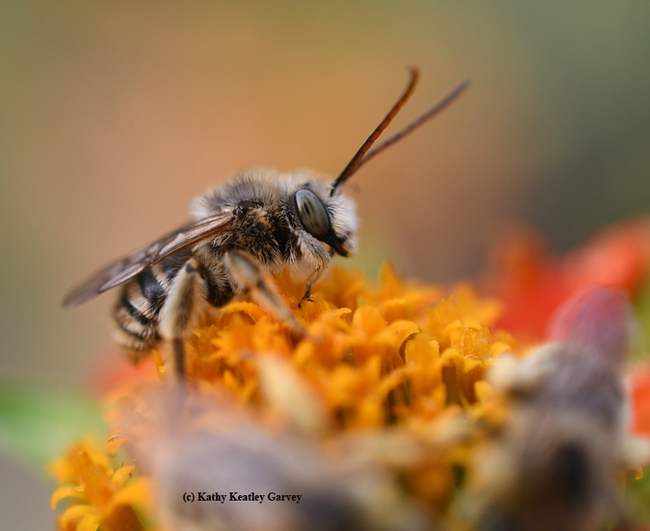
A male longhorned bee, Melissodes, prepares to leave his "bedroom," a Mexican sunflower. (Photo by Kathy Keatley Garvey)
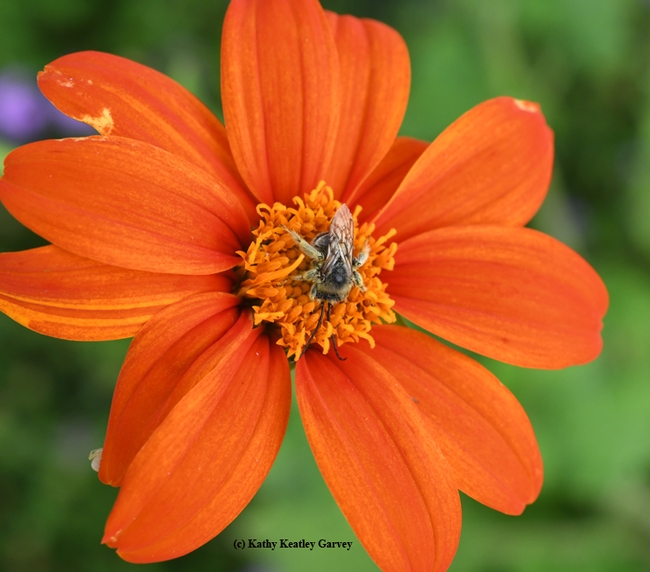
This male longhorned bee is sleeping alone on a Mexican sunflower. (Photo by Kathy Keatley Garvey)
Itsy Bitsy Spider
The itsy bitsy spider climbed up the water spout. Down came the rain and washed the spider out. Out came the sun and dried up all the rain and the...
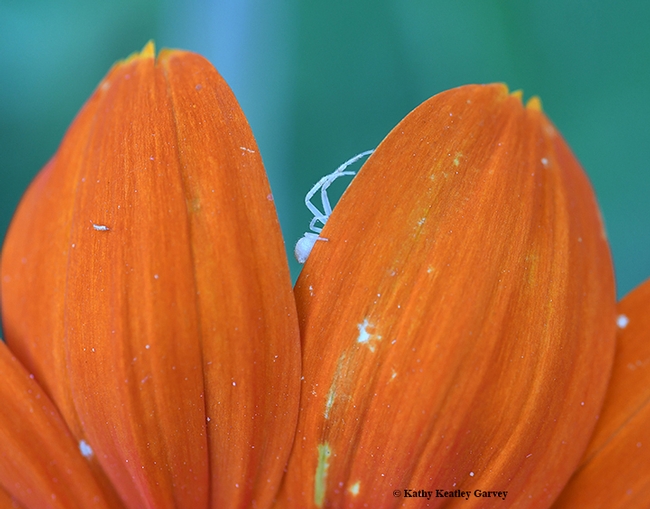
Yes, we can see you. A crab spider on Mexican sunflower (Tithonia). (Photo by Kathy Keatley Garvey)
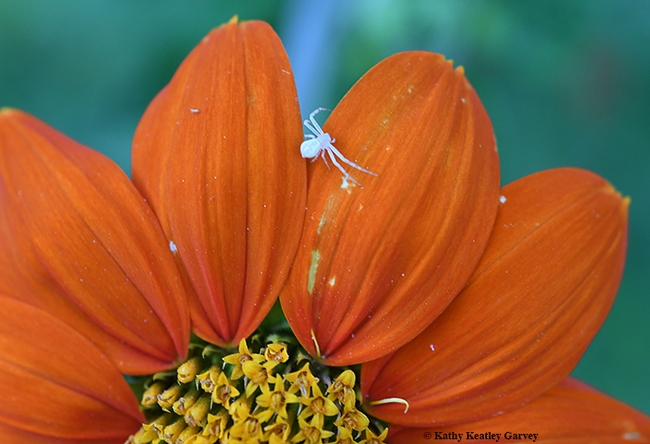
The crab spider ventures out on a petal of the Mexican sunflower (Tithonia). (Photo by Kathy Keatley Garvey)
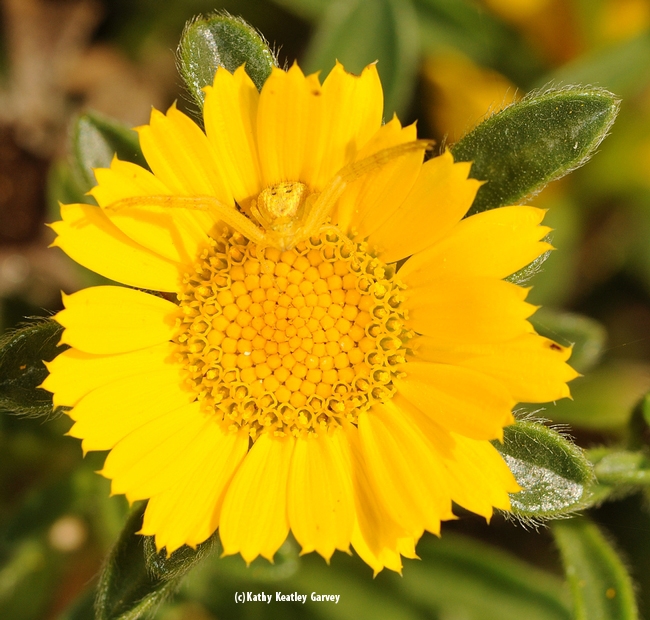
A perfectly camouflaged crab spider on a gold coin flower (Asteriscus maritimus). (Photo by Kathy Keatley Garvey)
Sorry, This Blossom Is Taken
So here's this male longhorned bee (Svastra) sipping a little nectar from a Mexican sunflower (Tithonia). As the late Mr. Rogers (1928-2003), star...
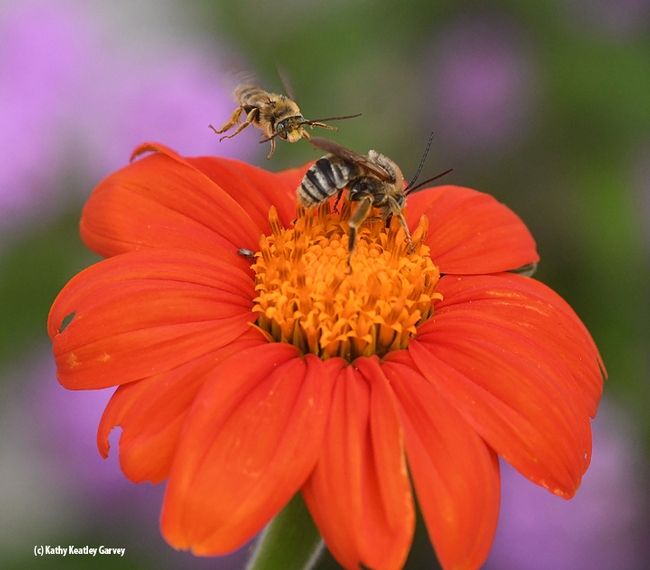
A male Svastra dive-bombs another male on a Mexican sunflower (Tithonia). This image was taken with a fast shutter speed of 1/3200 of a second. (Photo by Kathy Keatley Garvey)
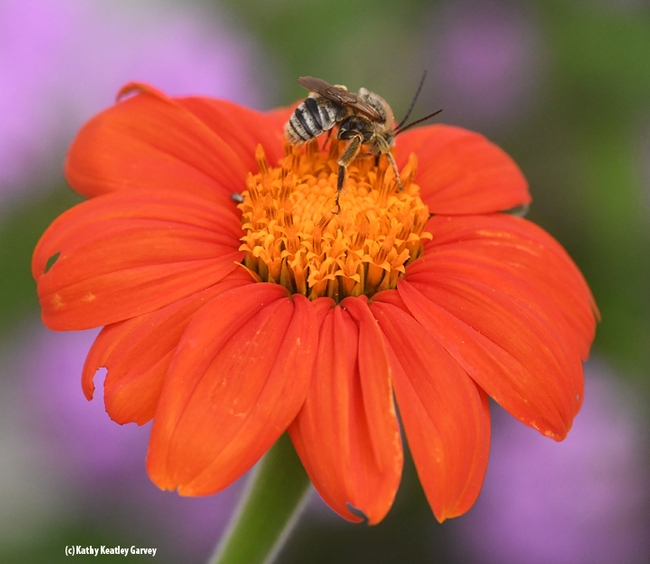
Following the dive-bombing, the male Svastra kept occupying the blossom. (Photo by Kathy Keatley Garvey)

